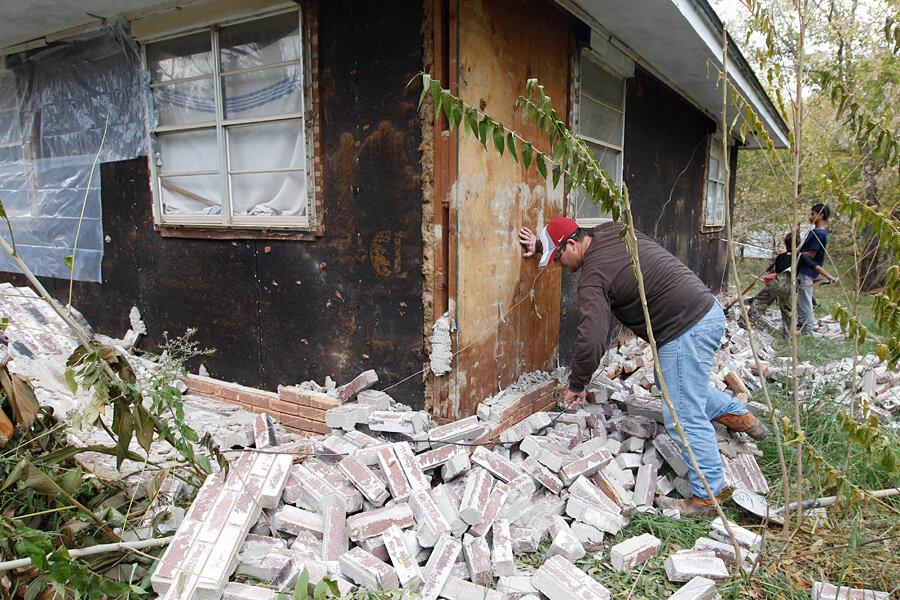What's causing all those earthquakes in Oklahoma?
Loading...
A dramatic jump in the number of earthquakes in Oklahoma to a rate never seen there by scientists before, appears to be caused by a small number of wells where wastewater associated with oil and gas production is injected into the ground, a study released on Thursday said.
Just a few of these so-called disposal wells, operating at very high volumes, "create substantial anthropogenic seismic hazard," according to findings from Cornell University researchers published in the journal Science.
Earthquake activity in Oklahoma has skyrocketed in recent years, and the U.S. Geological Survey recently warned that the state faces increasing risk of more potentially damaging earth-shaking activity.
Through the end of June, the number of potentially damaging earthquakes - magnitude 3.0 or larger - was up more than 120 percent compared to all of last year, according to state officials.
"There is an awful lot of smoke here," said Matt Skinner, spokesman for the Oklahoma Corporations Commission, which oversees oil and gas activities in the state. "We are examining the study very, very carefully. If this is an issue, this is a risk we will manage properly."
The worries come in a state where the local economy is closely tied to the oil and gas industry, and where officials have dubbed one of its cities, Tulsa, the "oil capital of the world."
And while most earthquakes occur naturally, some scientists openly worry that pressurized injections of wastewater from natural gas and petroleum production deep into wells can trigger earthquakes.
Oklahoma has 4,597 such disposal wells. The Oklahoma Independent Petroleum Association said because oil and gas activity is so prevalent in the state, seismic activity is likely to occur near industry operations, but that does not prove a correlation. Other states lacking significant oil and gas work also see increased seismic activity, OIPA President Mike Terry said.
"A rush to judgment based on one researcher's findings provides no clear understanding of the causes," he said.
Cornell's team reported that they found earthquakes can be induced nearly 30 km, or nearly 19 miles, away from a disposal well, beyond the current range of about 5 km, or 3 miles, currently used to diagnose induced earthquakes.
Additionally, four of the highest-volume disposal wells in Oklahoma were capable of triggering 20 percent of recent earthquakes in the region, the researchers said.
Overall, Oklahoma earthquakes in areas of high industry waste water disposal constituted nearly half of all central and eastern U.S. seismicity from 2008 to 2013, they added.
For the first half of 2014, Oklahoma recorded 241 earthquakes of 3.0 or greater, up from 109 of that level in 2013, and nearly at the five-year total of 278 recorded from 2008-2013, according to state data. From 1978 to 2008, the state on average recorded only two earthquakes of magnitude 3.0 or larger a year.
In 2011, Oklahoma suffered its biggest recorded quake, a 5.6 magnitude event that damaged more than a dozen homes and several businesses.
(Reporting by Carey Gillam in Kansas City; Editing by Susan Heavey)





